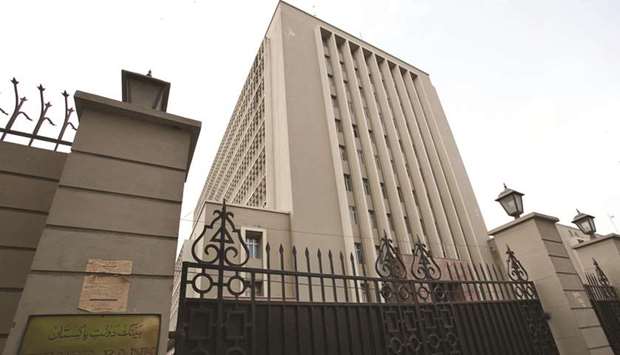Pakistan’s capital markets at the moment have all right ingredients to warrant the increasing foreign inflows; high interest rates, short-term macroeconomic stabilisation, and exchange rate stability.
Add to this the extremely low interest rates in the developed markets, Pakistan’s instruments offer the most lucrative carry trade opportunities.
But questions on the sustainability of inflows have begun to bother analysts, who question the central bank’s ability to maintain these funds once the rates come down.
JP Morgan’s London-based Head of Emerging Markets Strategy for Europe, the Middle East and Africa, Saad Siddiqui, cleared the confusion around the foreign investments in T-bills.
“The main risk for investors in T-bills is the potential for currency depreciation; we are comfortable for now that such risks are limited.
As far as the pace of inflows is concerned, while it is large by Pakistan’s standards, the reality is that even if the amount doubles (from under $3bn currently) then it is still low relative to the size of the local market, or by the standards of foreign bond holdings in other emerging markets.”
But many wonder whether these inflows will force the central bank to keep the rates high.
“As long as the policy framework remains credible, then foreign ownership does not necessarily result in higher interest rates; on the contrary, the increase in demand for Pakistani assets should, all else equal, decrease domestic interest rates over time.
The main risk for the SBP is that in the face of negative shock (internal or external), there could be outflows. Emerging market policymakers have become well-versed with managing risks of capital flow volatility in recent years, and have designed various tools and instruments in this area. “A well-designed policy framework, based on international best practices and lessons from other emerging markets, to manage these risks would serve the SBP well, and also address market concerns.”
JP Morgan in its January 20 research note recommended buying six-month rupee T-bills. Why this particular tenor only?
“We are recommending the shorter end of the yield curve for three reasons: First, it is the shorter tenors which are more liquid and easy to trade for foreign investors; it’s also where the majority of government securities issuance is taking place.
Second, the yield curve is inverted (longer tenors have lower rates), so the prospective yield is greater in shorter maturity T-bills. And third, while policymakers have successfully achieved macroeconomic stability in the short-term, medium-run uncertainties remain.
“For foreign investors, buying T-bills involves taking a view on the near-term prospects for macro-stability and the currency, and Pakistan looks attractive on these factors. The longer end of the yield curve, in addition to the above, is also a reflection of the country’s risk premium.
For investors to buy longer-dated rupee-denominated bonds, in addition to being comfortable on the outlook for inflation and macro-stability, they need comfort that the country risk premium can decline.
“For the country risk premium to sustainably decline, it is important for structural factors (public finances, institutional quality, long-term growth and productivity, among others) to be on a long-term improving trajectory.
On this front, it is premature to make a strong assessment as the government’s reform efforts, while pointing in the right direction, are still in their infancy.”
Some economists have argued that “capital inflows can build dangerous external liabilities that whiplash the economy and severely constrain the central bank”.
Do you agree that this could be the case with Pakistan?
“Capital inflows come with opportunities, but also risks that need to be managed.
“In Pakistan’s case, there has historically been a lack of financing options for the current account deficit. Typically the country has been dependent on (1) bilateral sources of financing and (2) issuance of USD bonds in the international markets to finance the current account deficit.
“This dependence on a very limited set of financing instruments is an overlooked explanation of Pakistan’s tendency to experience balance of payments crises. One can also argue that borrowing in USD places a greater constraint on macro policy.
In particular, it creates a trade-off between financial stability and export competitiveness (ie a weaker currency is negative for financial stability, but positive for exports; the financial stability factor typically dominates).
“This is why USD borrowing is known as the ‘original sin’ in the macroeconomic research literature. Borrowing in rupee can help alleviate this trade-off, as it shields the government from the negative impact of revaluation of USD-denominated debt whenever the currency is under depreciation pressure, and allows greater space for the currency to play its role in helping export competitiveness.
Therefore, if the authorities can create a new source of current account financing via local bond inflows, it would be an important structural reform.
“Foreign participation in T-bills is a starting point for such a reform, not the end point. To deeply entrench it as a structural improvement, encouraging inflows to longer-maturity bonds and targeting a captive pool of institutional capital pools via index inclusion would be important steps.
How much is too much for Pakistan’s capital markets?
“At current levels, the investments do not pose significant risk. Pakistan is likely to run twin deficits for the foreseeable future, so quotas or caps on financing instruments is unlikely to be productive.
“It would be better to adopt a well-designed policy framework to manage associated risks, and adopt best-practices for debt management to ensure a sufficiently diversified set of financing instruments with longer maturities.”

State Bank of Pakistan’s building in Karachi. The main risk for the SBP is that in the face of negative shock (internal or external), there could be outflows.


